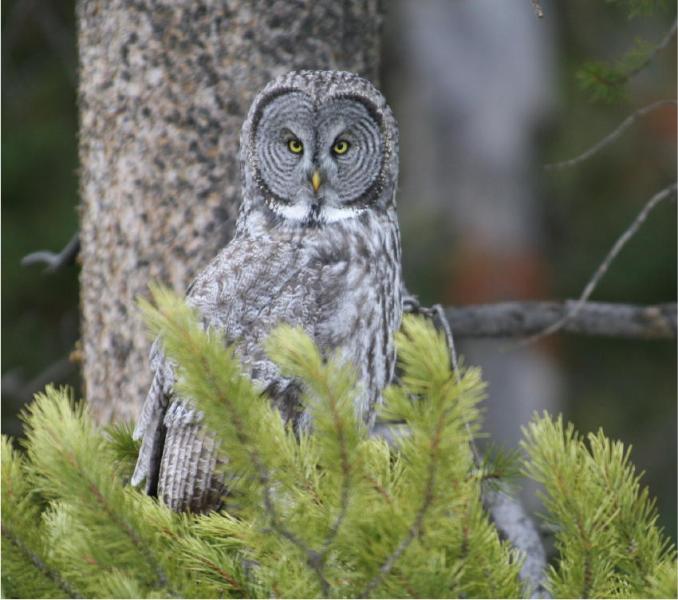Great Gray Owl
By Dave Hanks
We were in Yellowstone Park approaching the Canyon intersection, when I said to my wife: “You know what would make this a really great trip? – finding a Great Gray Owl.” We turned south and had traveled less than a half mile when my eye caught what looked like a knob on the end of a stick. My heart leaped and I said: “There’s one!” Sure enough, it was an owl, not just one but two! I started taking pictures at a great distance by stalking – moving up six feet, stopping, shooting, and moving again. I took off each of my extension lens as I got closer and closer. I got quite close, and one seemed content to just sit and watch me. Luckily he was low down, on a bare branch in a Lodgepole Pine.
The GREAT GRAY OWL is not the heaviest owl, but it is the biggest in volume. Its head is smooth (lacking the ear tuffs that identify the Great Horned Owl) and it has huge, heavily ringed facial disks that make its eyes look smaller than they are. These disks are tremendous aids in channeling sounds to the ears. The ears are to the sides of the eyes and concealed by feathers. Its hearing is acute. A mouse or vole, running underneath the snow, can be heard and pinpointed at a surprising distance. With both excellent vision and hearing, this bird is adept at nighttime, dawn, or dusk hunting.
Boreal forests and wooded bogs of the far north are this species preferred habitats. Although not common further south, they may also be found in mountainous, coniferous forests where they hunt the forest clearings. Their call is a series of deep, resonant “whoo’s”.
Of all the raptors, owls stir my senses the most. The Great Gray Owl is not easy to come upon and an observation, especially a photographic session, is a very special event.
(Watching me as well as scanning for voles)
|
